An Amputee’s Guide to Jules Verne
By Nick DiMartino,
Albany, GA., BearManor Media, 2024. 524 pages.
Softcover — ISBN-13: 979-8887714172
Hardcover — ISBN-13: 979-8887714189
A WORLD-FAMOUS AUTHOR WHO TRAVELS EVERYWHERE, A READER IN A WHEELCHAIR WITH ONE LEG.On St. Patrick’s Day, 2021, Nick DiMartino got up from his reading chair to go on his daily walk through the park and fell over. An unsuspected blood clot had cut off the blood supply to his right leg. Along with a heart attack and a sequence of six operations, at age 75 this bookseller of 50 years lost his right leg above the knee and suddenly entered a new minority of human existence: the amputee.
With the loss of easy mobility came a fascination with the author most noted for movement and travel, the globe-trotting Jules Verne. Without suspecting where it would lead, he read the rediscovered Verne novel, The Golden Volcano, about the Canadian gold rush and was hooked. He looked for a guide book through all 66 Verne novels. None existed. He set out on his quest through all of the Voyages Extraordinaires to find copies of them all and read them all, one after another, writing essays in his new diminished ability to travel while at the same time traveling fearlessly in his mind with Jules Verne to the far corners of the world – Around the World in 80 Days, 20,000 Leagues Under the Sea, Journey to the Center of the Earth, etc.
He created these essays for those of you who haven’t taken the journey yet into the many other fabulous Verne novels, to lure you and snare you and encourage you. And for those who have already read them, as an easy reference and reminder of which characters are in which novel, a summary and consideration of the thrills and joys of the lesser known adventures. DiMartino experiences pure reading euphoria in the hands of Jules Verne. He wants to share that storytelling rapture with you.
Get it in paperback at BearManor Media, or Amazon.com.
Get it in hardback at BearManor Media.
For audio recommendations for this title, click here.
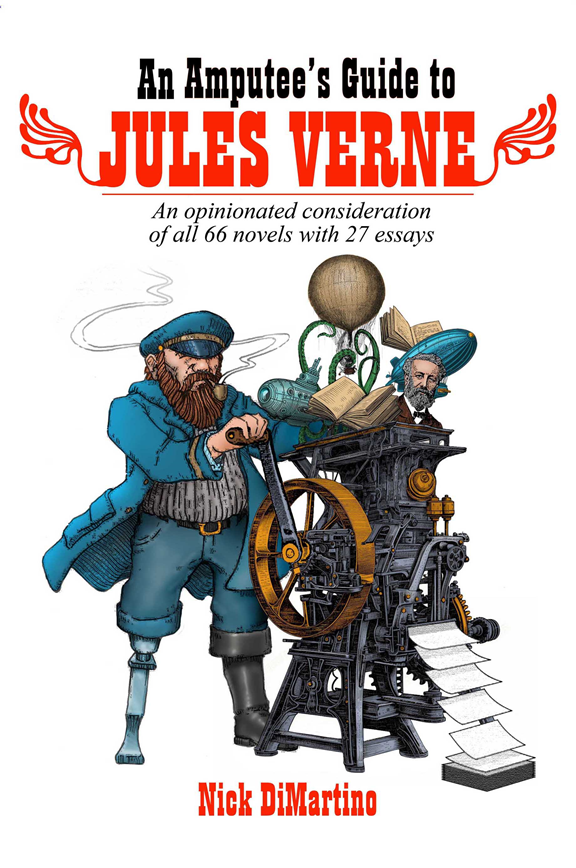
Avenger of the Dead: Mathias Sandorf
By Michel Verne, Translated by Kieran O’Driscoll,
Albany, GA., BearManor Media, 2023. 428 pages, ?? ill.
Softcover — ISBN-13: 979-8887713694
Hardcover — ISBN-13: 979-8887713700
A man believed to be dead for many years has, in actual fact, all the while been carefully planning his meticulous revenge mission whilst in hiding, living under an assumed identity, and he is now, finally, about to come out of hiding to exert devastating vengeance on his enemies. Not alone is he acting on his own behalf, but he equally seeks to avenge the deaths of his fallen comrades-in-arms. This man is the eponymous Avenger of the Dead - Mathias Sandorf.This is a first-time translation into English of Michel Verne’s novelization of his 1921 film version of his father Jules Verne’s classic 1883 adventure story Mathias Sandorf. In addition to the rendering itself, by Verne scholar and translator/translation theorist Kieran O’Driscoll, this volume contains a wealth of fascinating research about the film itself, its actors and its director, with copious illustrations including press cuttings, film posters and film stills, by Verne and Film Studies expert Philippe Burgaud. This volume is dedicated to the memory of the late Dr Brian Taves, Verne and Film Studies scholar who sadly passed away during the preparation of this volume in which he had been a key collaborator.
Get it in paperback at BearManor Media, or Amazon.com.
Get it in hardback at BearManor Media, or Amazon.com.
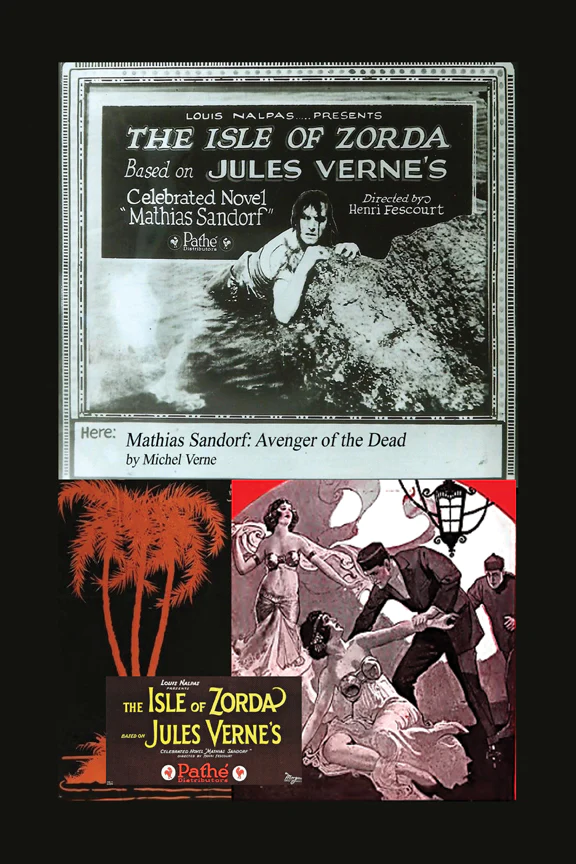
Extraordinary Visions: Stories Inspired by Jules Verne — An Anthology
Edited by CDR Steven R. Southard, USNR (Ret) and Rev. Matthew T. Hardesty
Albany, GA., BearManor Media, 2023. 224 pages, ?? ill.
Softcover — ISBN-10: 1629339547, ISBN-13: 978-1629339542
Hardcover — ISBN-10: 1629339555, ISBN-13: 978-1629339559
The anthology includes wonderful Vernian stories by Mike Adamson, Joel Allegretti, Gustavo Bondoni, Demetri Capetanopoulos, Brenda Carre, Eric Choi, Christopher M. Geeson, Kelly A. Harmon, David A. Natale, Alison L. Randall, Janice Rider, Michael Schulkins, and Joseph S. Walker. Credit goes to artist Amanda Bergloff for the stunning cover image.
Get it in paperback at BearManor Media, or Amazon.com.
Get it in hardback at BearManor Media, or Amazon.com.
Get it in eBook at BearManor Media, or Amazon.com.
For the audio version of this title, click here.

The Palik Series is published
by the North American Jules Verne Society and BearManor Media, and offers stories and plays by Verne
that have never before appeared in English. These volumes will be available nowhere
else, and utilize the talents of the foremost Verne translators and scholars in
books lavishly illustrated with original 19th century engravings. The
Palik Series is also available in e-book form, with some volumes on audible.com. Brian Taves is series editor, and eight
of the projected twelve volumes have been published already.
Click on the link to see what’s out now and what will be available in the future.
The first eight volumes out now are available together for the special discount of $125 from the publisher.
Read the Press Release and the interviews with series editor, Brian Taves.
All the volumes are profusely illustrated, as discussed here.
Our translators:
Edward Baxter, Danièle Chatelain, Alex Kirstukas, Sidney Kravitz, Frank Morlock, Kieran O’Driscoll, Peter Schulman, George Slusser, Jean-Louis Trudel
Contributors of critical material:
Philippe Burgaud, Daniel Compère, Volker Dehs, Jean-Michel Margot, Walter James Miller, Garmt de Vries-Uiterweerd
Acknowledgements:
Additional assistance and support from these individuals and organizations.
The series has been made possible by a bequest by our late member, Edward D. Palik.
Click on the link to see what’s out now and what will be available in the future.
The first eight volumes out now are available together for the special discount of $125 from the publisher.
Read the Press Release and the interviews with series editor, Brian Taves.
All the volumes are profusely illustrated, as discussed here.
Our translators:
Edward Baxter, Danièle Chatelain, Alex Kirstukas, Sidney Kravitz, Frank Morlock, Kieran O’Driscoll, Peter Schulman, George Slusser, Jean-Louis Trudel
Contributors of critical material:
Philippe Burgaud, Daniel Compère, Volker Dehs, Jean-Michel Margot, Walter James Miller, Garmt de Vries-Uiterweerd
Acknowledgements:
Additional assistance and support from these individuals and organizations.
The series has been made possible by a bequest by our late member, Edward D. Palik.
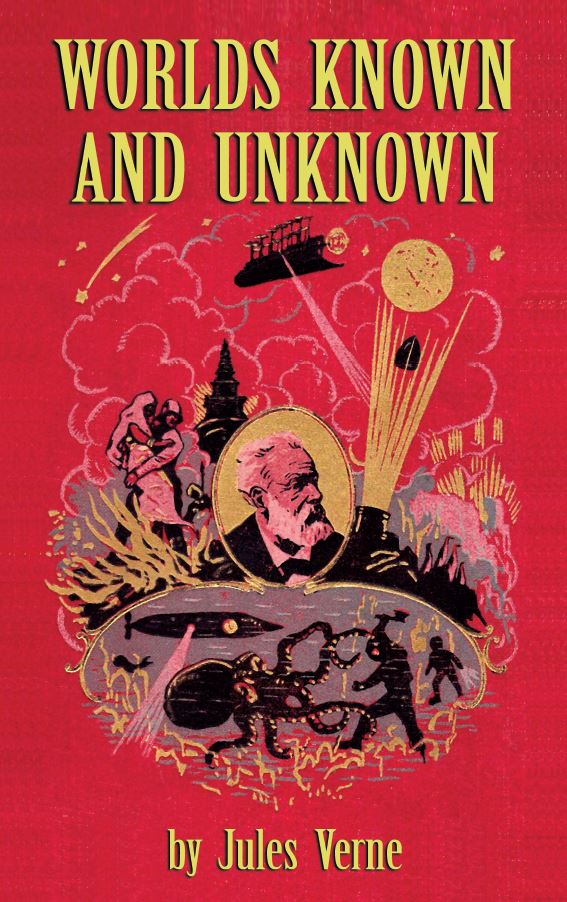
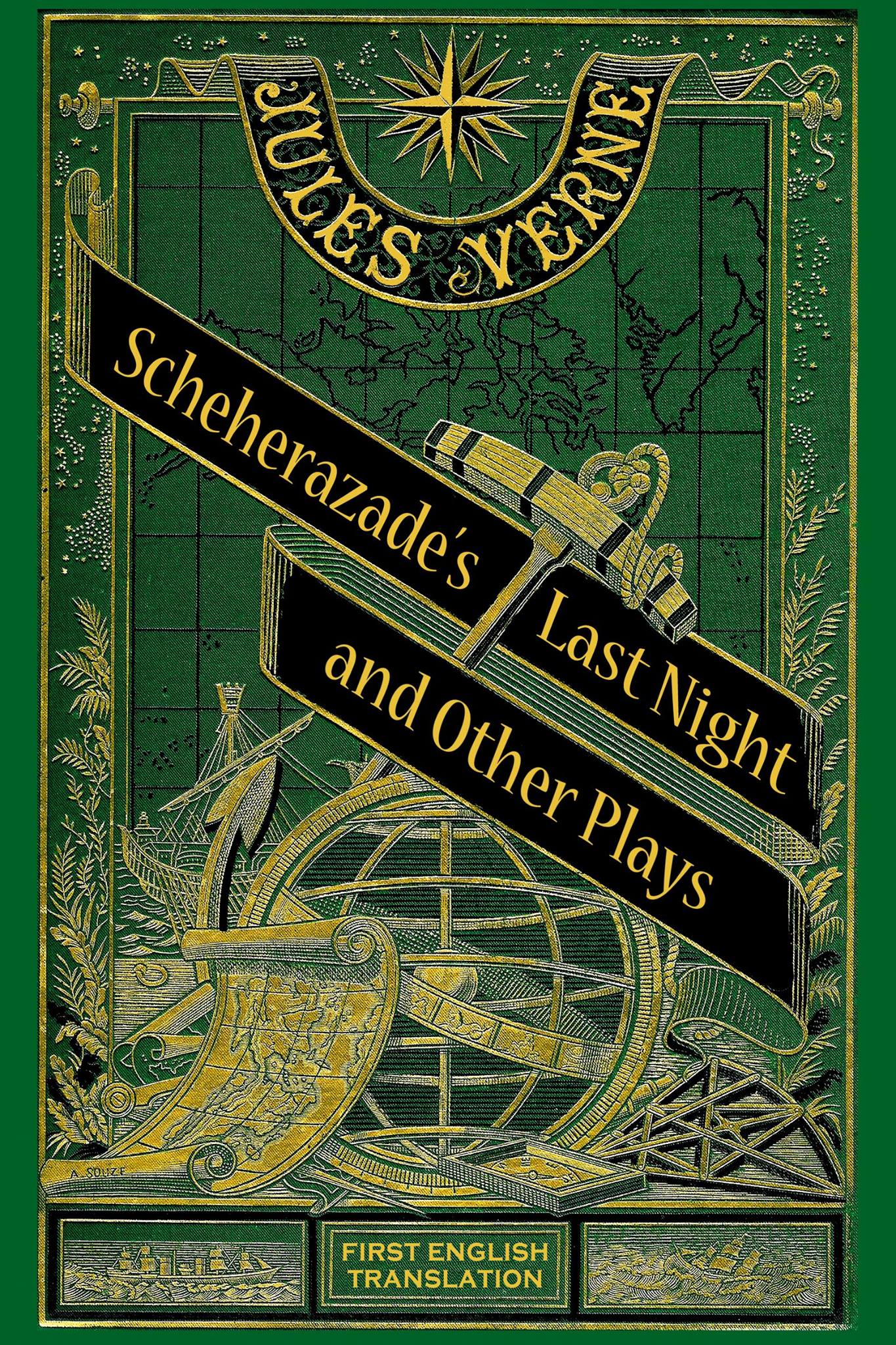
Here are some reviews of the series:
“This series of high-quality paper covered books … Translations, essays, period illustrations all combine … We recommend all four (and this continuing series) to anyone who ever fell under the spell of the ‘Voyages Extraordinaires.’”
— J. Randolph Cox, “The Reference Shelf: Jules Verne, The Palik Series,” Dime Novel Round-Up, Vol. 81, June 2012, 99-100.
“Here are … new volumes published under the auspices of and with the support of The North American Jules Verne Society.… The editorial team includes distinguished translators and scholars of Verne. The whole project to date has not only produced these beautiful and thorough books but also opened up again the scholarly treasure chest of puzzles about how to translate Verne and what to make of the important writings of his that are not yet in English. I think that every library and every serious student of Verne and of SF and of French literature needs to get these four volumes and to sign up for what is yet to come. The work here and the scholarly activity behind it that continues tells us how misunderstood this very popular writer has been, and it is a major literary mapping of what is important to us as we try to sort out the relation of genre SF to mainstream literature.”
“Every text published here is new in English translation… the reproduced illustrations … [are] an added bonus…. These new volumes … will contribute to much more scholarly and critical work on the remarkable Jules Verne.”
— Donald M. Hassler, “The Rescue of Jules Verne the Writer,” Extrapolation 53.3 (Fall 2012): 379-382.
“Popularity and literary recognition do not often go hand in hand. The works of Jules Verne, one of the most widely read French authors in the world, paid the price for their success: free adaptations and poor translations all but obliterated the original quality of Verne’s complex oeuvre. … But if fanciful movies and shortened versions of Verne’s novels continue to flood the market, a number of scholarly editions have recently been published by Oxford University Press, Wesleyan University Press, and the University of Nebraska Press. The Palik Series, sponsored by the North American Jules Verne Society, joins these presses with a specific goal: to publish first-time English translations of Verne’s most overlooked works, plays, or short stories that throw a new light on the writer’s inexhaustible imagination. …
The series’ other titles, Mr. Chimp and Other Plays, Shipwrecked Family, Vice, Redemption and the Distant Colony, The Marriage of a Marquis, also offer a radically new vision of Jules Verne as a satirist with a touch of Rabelaisian humor, an entertaining Vaudeville playwright, a writer endowed with an imagination that continues to surprise and delight his readers. Upcoming Palik titles, Bandits and Rebels and A Priest in 1835, will further illustrate Verne’s initial literary ambition, to find his place between Balzac and Alexandre Dumas.”
— Marie-Hélène Huet, review in French Forum, Vol. 28, nos 1-2, 2013, 288-290.
“A wonderful new series of Verne translations, expertly edited and lavishly adorned with authentic 19th-century illustrations and cover art. Fans and newcomers alike will discover facets of Verne they never knew existed. Bravo!”
— Alex Kirstukas, author of a new translation of The Children of Captain Grant and Robur the Conqueror
“The ‘Palik Series,’ which began in 2011, is an original publication of Jules Verne’s texts. Under the guidance of Brian Taves, this project of the North American Jules Verne Society is in its eighth volume. This remarkable collection provides an opportunity for Anglophone readers to look back and highlight the uniqueness of the series, particularly the unfamiliar texts of Jules Verne, well translated, well documented, and with a variety of comments. An undertaking to be greeted and welcomed.”
— Daniel Compère, “Un Jules Verne inattendu : la collection Palik (Palik Series),” Verniana, Vol. 7, (2014-2015): 63-74.
“The whole project to date has not only produced a number of beautiful and thorough books but also opened up again the tangled treasure chest of puzzles about how to translate Verne and what to make of the important writings of his in this strange modern genre. All this activity continues to tell us how misunderstood this very popular writer has been, and it is a major literary mapping for us of what is important as we try to sort out the relation of genre SF to mainstream literature as well as to comprehend origins.”
— Donald M. Hassler, extracted from “The Tangled Bank that Writers Inhabit: New Windows on Jules Verne,” The New York Review of Science Fiction, December 2016, Number 340, Vol. 29, No. 4, 25-29.
Golden Danube and A Priest in 1835
”These two titles in the ‘Palik Series of Jules Verne’ represent the beginning and the end of his writing career. Golden Danube is one of a number of novels that were published posthumously but has not had a proper English translation until now. A Priest in 1835 was written in 1847 or 1848 when its author was 19 but was not published until 1992. This is the first English translation. We have chosen to review these books in the order in which they have appeared in the Palik Series and not in their original chronological order.
Golden Danube is truly an ‘extraordinary voyage’ as the hero travels on the Danube, a river that Verne takes some pains to explain to the reader is not blue as the composer Strauss called it, but yellow, and therefore the title he gave to this book is correct. Ilia Krusch is a fisherman who wins two contests: one for the most fish caught and one for the largest fish caught. He accepts his prizes and announces his intent to sail the entire length of the river, beginning at its source.
This is part an adventure story and part a travelogue with a mystery thrown in for good measure. There are smugglers in the area led by a man named Latzko. Ilia Krusch is joined at one point in his journey by the mysterious Mr. Jaeger, and the reader wonders whom he really is, Police Chief Karl Dragoch traveling incognito or Latzko himself.
The 36-page introduction discusses the history of the novel that was reworked by Verne’s son, Michel Verne, into a considerably different story and published in 1908 under the title Le Pilote de Danube. Nearly sixty years later, it was this version that I.0. Evans translated into English as The Danube Pilot. O’Driscoll explains the differences between the two versions including the lack of Verne’s light, humorous tone in the son’s work.
This little-known, posthumous novel shows little sign of it being the work of a man past his prime, though Ilia Krusch’s journey down the Danube is also Verne’s journey through the last years of his life.
A Priest in 1835 shows the influence of Edgar Allan Poe, which lasted through much of Verne’s life. The story opens in the gothic church of St. Nicholas, and the setting is described in great detail. It soon becomes obvious this is a detective story in the manner of Poe’s stories about C. Auguste Dupin published only a few years previously.
As the story opens, the great church, the bell tower, and the bell itself all become parts of the story. The bell tolls and the building begins to sway causing the bell to fall through the floor of the tower. While some people die, others are rescued.
All the main characters, including Pierre Herve, the priest of the title, are introduced in the first chapter and the mysterious events that will require explanation are also introduced. The reader is encouraged to keep track of the information that will make everything clear in the end.
Written at the beginning of Verne’s career, A Priest in 1835 is surprisingly mature in its style and structure.
A 64-page introduction discusses Verne’s debt to Poe in his earliest novel and the connection of the novel to his later works. It is a complex situation, and Danièle Chatelain and George Slusser do an excellent job to make it less complex. It is Verne’s skillful blend of detective and gothic fiction in this novel that leads to the scientific adventures that have come to be known to us as ‘science fiction.’ This is an introduction that warrants a close reading.”
— J. Randolph Cox, “The Reference Shelf,” Dime Novel Round-Up, Vol. 85, Fall 2016, 124-125.
“A very solid legacy to bequeath to future Vernians.”
— Mahendra Singh, Artist and Illustrator, A comment to Brian Taves via Facebook 29 Apr 2019.
NAJVS also co-published with
Prometheus Books the first ever (in book form) English translation of “Voyage à travers l’impossible” (Journey through the Impossible).
Praise for the publication of this Jules Verne play, Journey through the Impossible:
Music from the quadrille that was inspired by the success of the play as referenced in the book on page 71 may be found here.
Click here to see the entry for the book at Amazon.com.
Praise for the publication of this Jules Verne play, Journey through the Impossible:
“A work for Verne aficionados, theater buffs, or just those who enjoy a good story…. See another side of the ‘Father of Science Fiction.’”Here are three more reviews on this work.
— Washington Science Fiction Association
Music from the quadrille that was inspired by the success of the play as referenced in the book on page 71 may be found here.
Click here to see the entry for the book at Amazon.com.

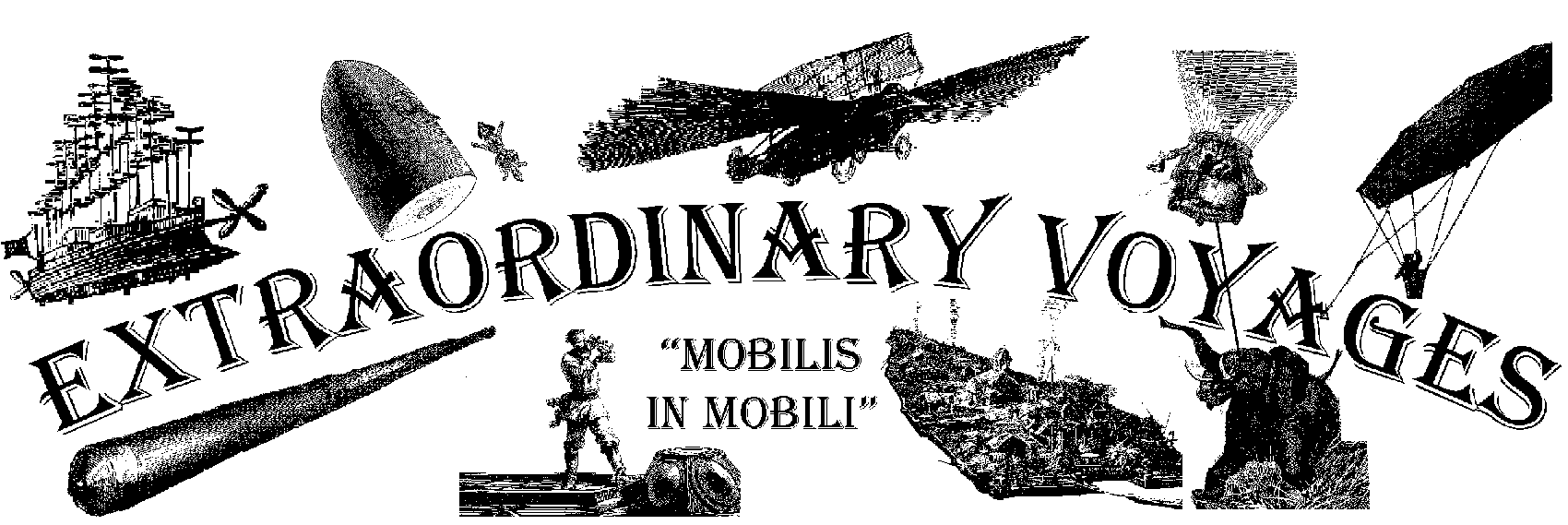
This is the masthead from the society’s news magazine, which is published approx
4 times per year. It is a peer-reviewed publication that contains articles and essays
related to Verne from scholars around the world, conference proceedings, archive
news, including rediscovered stories, vintage pastiches, and book and media reviews.
- Editorial Committee:
- Dr. Terry Harpold, University of Florida
- Alex Kirstukas, NAJVS, Inc.
- Dennis Kytasaari, NAJVS, Inc.
- Jean-Michel Margot, NAJVS, Inc.
- Steven R. Southard, NAJVS, Inc.
An article that appeared in this news magazine may be found here.
An index to the contents of the news magazine may be found here.
 © 1993 - 2025 North American Jules Verne Society, Inc. — a 501(c)(3) Corporation
© 1993 - 2025 North American Jules Verne Society, Inc. — a 501(c)(3) Corporation